Welcome to Trinetram.

Seven Chakras: Milestones on the Pathway to Nirvana
The seven chakras, or energy centers, serve as significant milestones along the three primary Nadis—Ida, Pingala, and Sushumna. These chakras hold profound importance in yoga and ancient Indian philosophy, symbolizing stages of spiritual growth and energy transformation within the human body. These chakras, located along the spine, represent physical, emotional, and spiritual energies that influence our well-being and connection to the universe. By balancing or activating these chakras, one can embark on a journey of self-discovery, connect with their inner self, and ultimately attain Nirvana- the state of liberation from the cycle of birth and rebirth.
Introduction to the Seven Chakras

The concept of chakras is rooted in ancient Indian texts like the Upanishads and the Yoga Sutras of Patanjali. Each chakra is associated with specific qualities and energies, which influence our health, emotions, and spiritual growth.
As cited in Shiva Samhita,( Chapter 2, Verse 12) “चक्रं शुद्धिं विनिर्मुक्तं योगिनो गच्छति परमं।” (Cakraṁ Śuddhiṁ Vinirmuktaṁ Yogino Gacchati Paramaṁ) Means, “By purifying the chakras, the yogi attains the supreme state.”
Let us explore each chakra and its significance on the path to Nirvana.
1. Muladhara (Root Chakra)
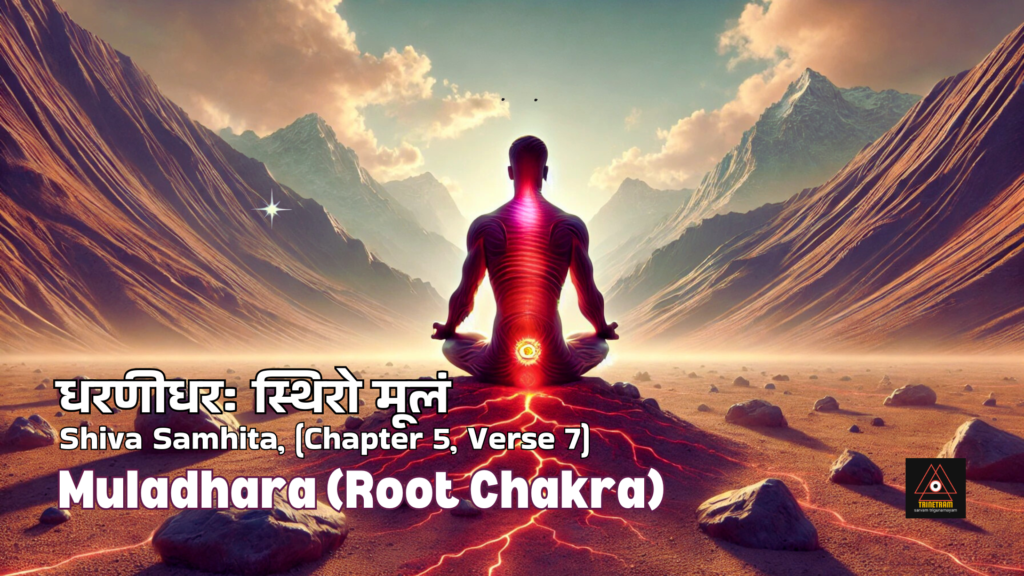
- Location: Base of the spine.
- Element: Earth.
- Significance: The foundation of physical and emotional security. Balancing Muladhara promotes stability, grounding, and resilience.
As cited in Shiva Samhita, (Chapter 5, Verse 7) “धरणीधरः स्थिरो मूलं।”( Dharaṇīdharaḥ Sthiro Mūlaṁ) Means, “Grounded like the Earth, the root is steadfast.”
A balanced root chakra promotes financial stability, good health, and a sense of safety.
For more details click here: https://trinetramyc.com/muladhara-root-chakra/
2. Svadhisthana (Sacral Chakra)

- Location: Lower abdomen, below the navel.
- Element: Water.
- Significance: Governs creativity, pleasure, and relationships. A balanced sacral chakra enables emotional fluidity and joyful expression.
As cited in Shiva Samhita,( Chapter 3, Verse 8) “संधानं रसभावेन स्वाधिष्ठानं प्रवर्तते।” (Saṁdhānaṁ Rasabhāvena Svādhiṣṭhānaṁ Pravartate) Means, “Through emotional harmony, the sacral chakra thrives.”
It supports healthy relationships, enhances creativity, and aligns desires with purpose.
For more details click here: https://trinetramyc.com/svadhisthana-sacral-chakra/
3. Manipura (Solar Plexus Chakra)
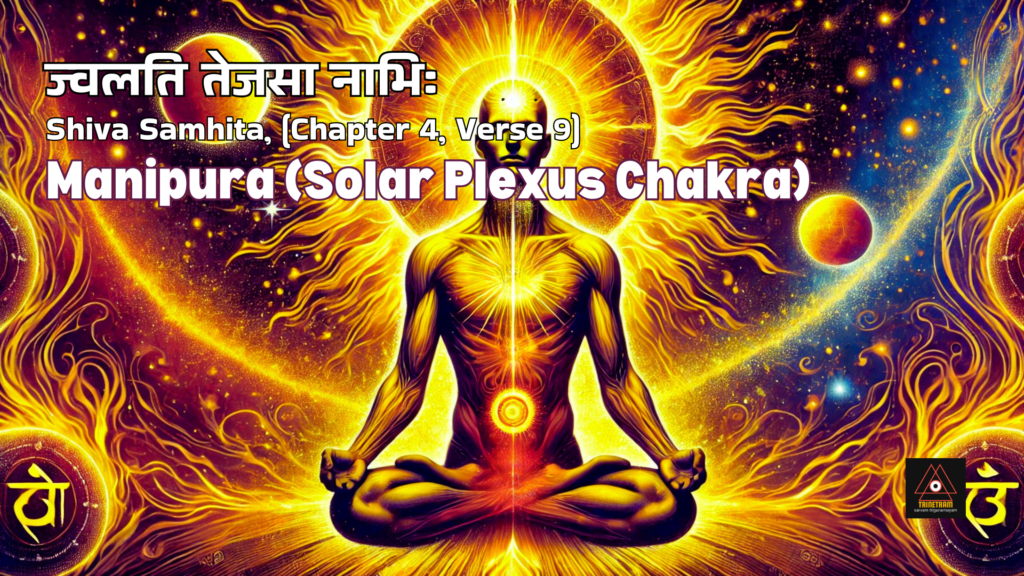
- Location: Upper abdomen, at the navel.
- Element: Fire.
- Significance: Represents personal power, confidence, and transformation. A balanced Manipura fuels ambition and self-esteem.
As cited in Shiva Samhita,( Chapter 4, Verse 9) “ज्वलति तेजसा नाभिः।” (Jvalati Tejasā Nābhiḥ) Means, “The navel burns bright with energy.”
This chakra is vital for achieving goals, maintaining digestive health, and fostering leadership qualities.
For more details click here: https://trinetramyc.com/manipura-chakra-solar-plexus/
4. Anahata (Heart Chakra)

- Location: Center of the chest, at the heart.
- Element: Air.
- Significance: Symbolizes love, compassion, and balance. A balanced heart chakra nurtures emotional healing and harmonious relationships.
As cited in Shiva Samhita,( Chapter 4, Verse 10) “हृदयकं स्नेहपूर्णं अनाहतः।” (Hṛdayakaṁ Snehapūrṇaṁ Anāhataḥ) Means, “The heart is full of love and untouched sound.”
Anahata bridges the physical and spiritual realms, fostering universal love and empathy.
For more details click here: https://trinetramyc.com/anahata-heart-chakra/
5. Vishuddha (Throat Chakra)
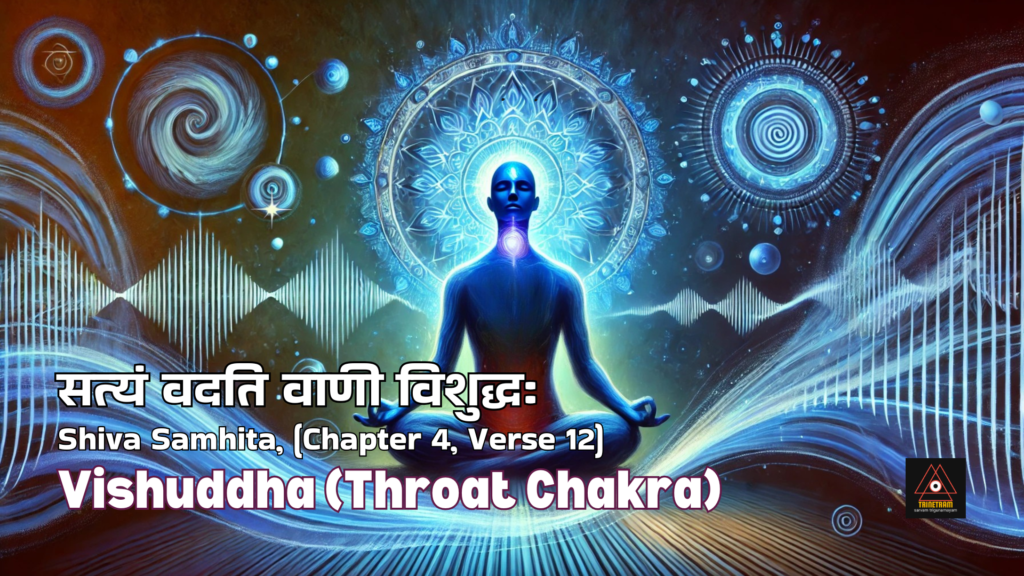
- Location: Throat.
- Element: Ether.
- Significance: Governs communication, self-expression, and truth. A balanced Vishuddha enables honest dialogue and creativity.
As cited in Shiva Samhita,( Chapter 4, Verse 12) “सत्यं वदति वाणी विशुद्धः।” (Satyaṁ Vadati Vāṇī Viśuddhaḥ) Means, “Truth flows through the throat chakra.”
This chakra is essential for clear communication, self-expression, and maintaining trust in relationships.
For more details click here: https://trinetramyc.com/vishuddha-throat-chakra/
6. Ajna (Third Eye Chakra)
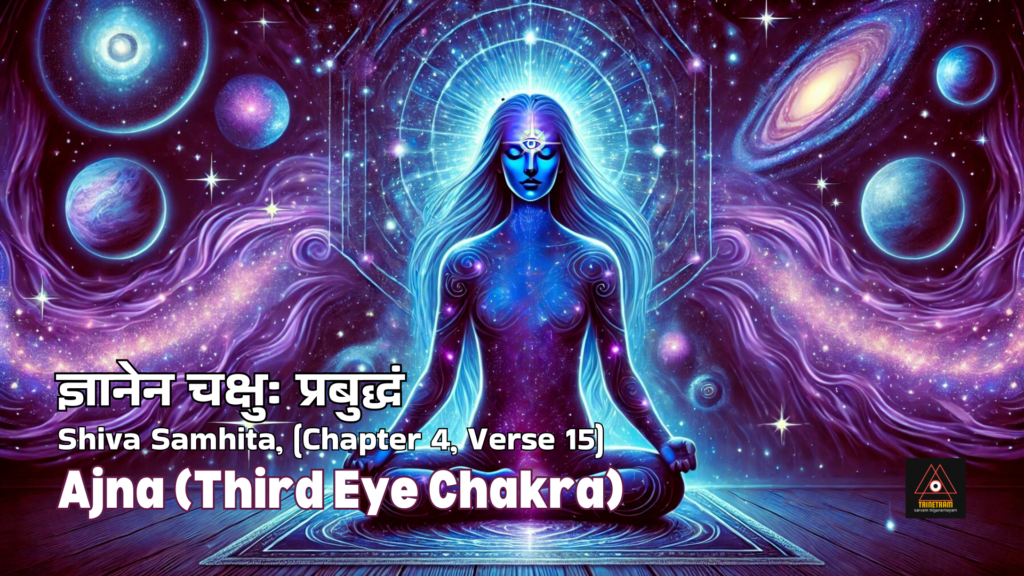
- Location: Between the eyebrows.
- Element: Light.
- Significance: Represents intuition, wisdom, and clarity. A balanced Ajna fosters insight and connection to higher consciousness.
As cited in Shiva Samhita,( Chapter 4, Verse 15) “ज्ञानेन चक्षुः प्रबुद्धं।” (Jñānena Cakṣuḥ Prabuddhaṁ) Means, “The eye of wisdom awakens through knowledge.”
Ajna aids in decision-making, mental clarity, and spiritual awakening.
For more details click here: https://trinetramyc.com/ajna-third-eye-chakra/
7. Sahasrara (Crown Chakra)
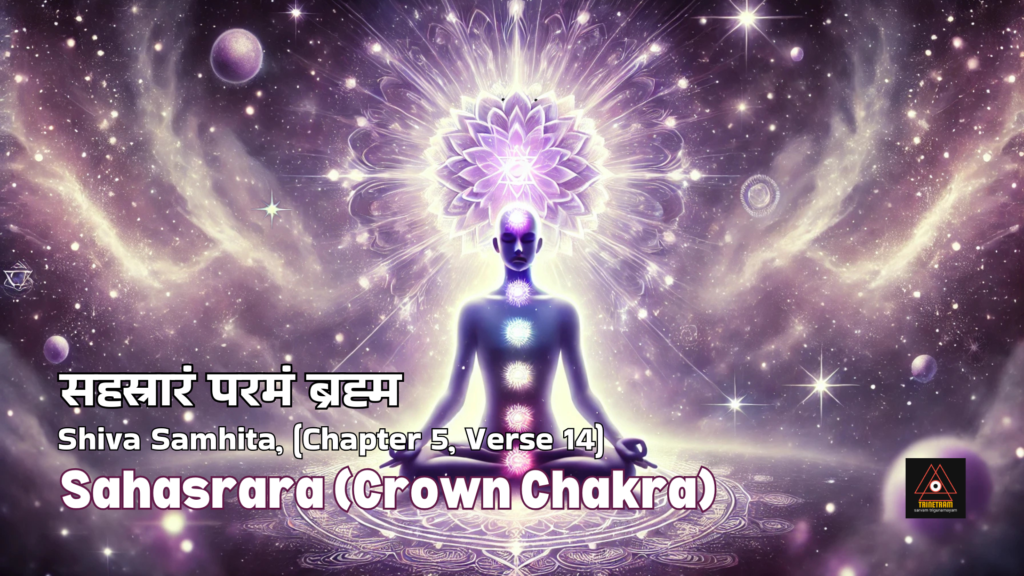
- Location: Top of the head.
- Element: Cosmic Energy.
- Significance: The gateway to divine connection and spiritual enlightenment. A balanced Sahasrara aligns the individual with universal consciousness.
As cited in Shiva Samhita,( Chapter 5, Verse 14) “सहस्रारं परमं ब्रह्म।” (Sahasrāraṁ Paramaṁ Brahma) Means, “The crown is the supreme Brahman.”
Sahasrara transcends individuality, fostering unity and Nirvana.
Conclusion
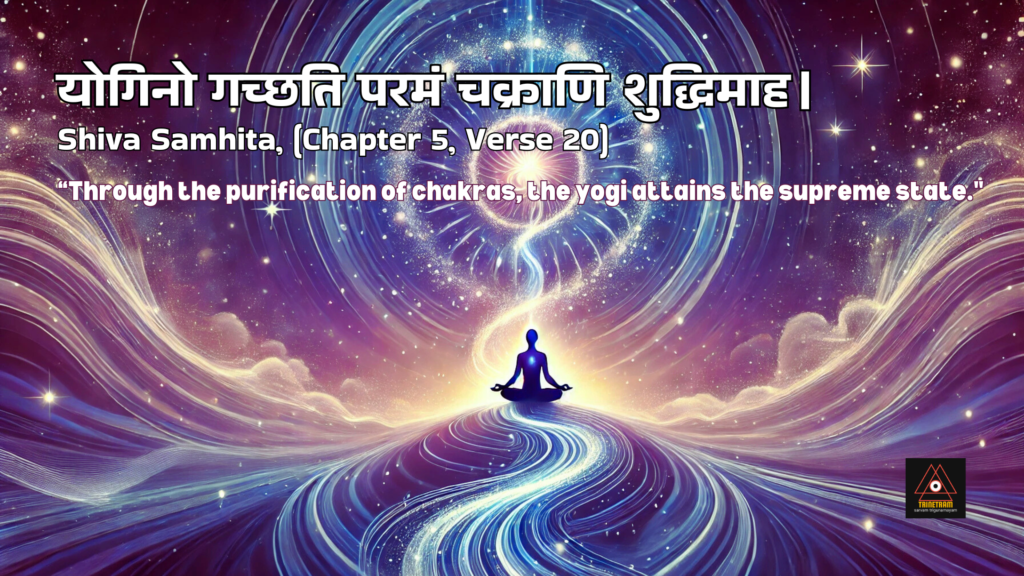
Thus each chakra acts as a milestone, guiding the seeker toward self-awareness and ultimate enlightenment. By balancing these energy centers, one can achieve harmony in health, relationships, and personal growth, aligning with the universal consciousness. This alignment not only fosters inner peace but also propels one closer to Nirvana, the ultimate state of spiritual freedom.
As cited in Shiva Samhita, (Chapter 5, Verse 20)”योगिनो गच्छति परमं चक्राणि शुद्धिमाह।” (Yogino Gacchati Paramaṁ Cakrāṇi Śuddhimāha) Means “Through the purification of chakras, the yogi attains the supreme state.”
Embrace the wisdom of the chakras, and take the first step on the path to self-realization and unity with the cosmos. By understanding and balancing these energy centers, one moves closer to Nirvana, experiencing harmony with self and the cosmos.
We will explore Muladhara (Root Chakra) Chakra: For financial stability and good health in our upcoming blog. Until then, stay tuned to trinetramyc.com! 🌈
We would love to hear your valuable thoughts and insights to help us deepen this exploration.
Thank you,Team Trinetram 🙏

Leave a Reply